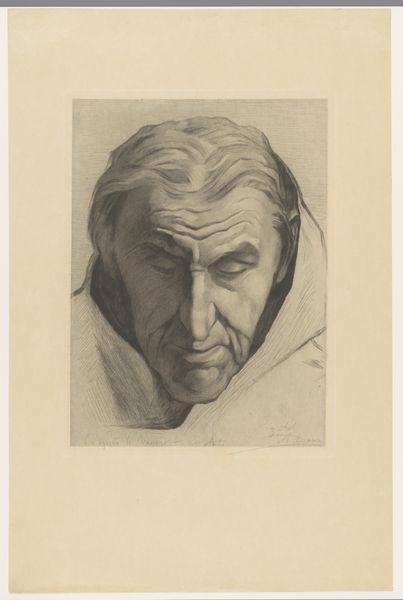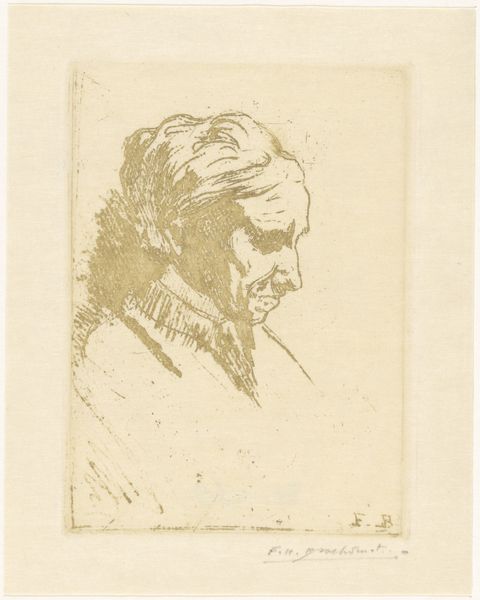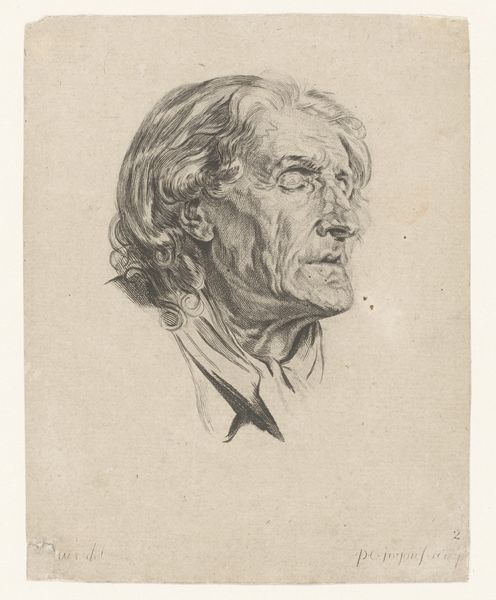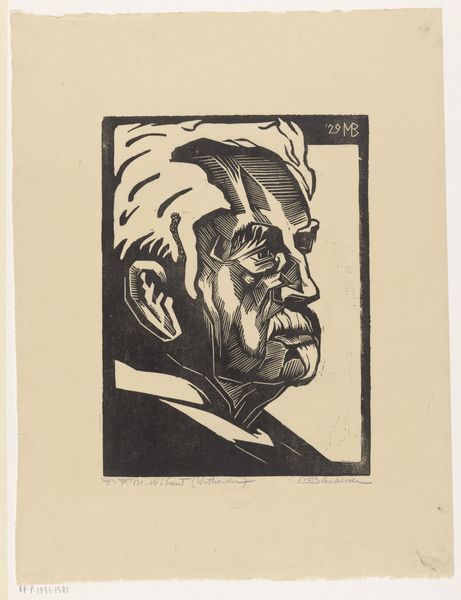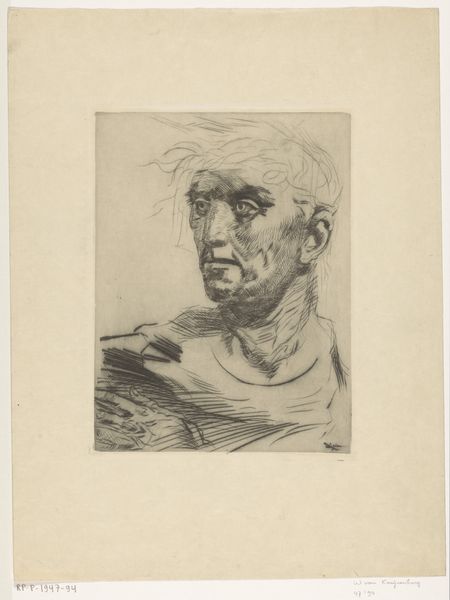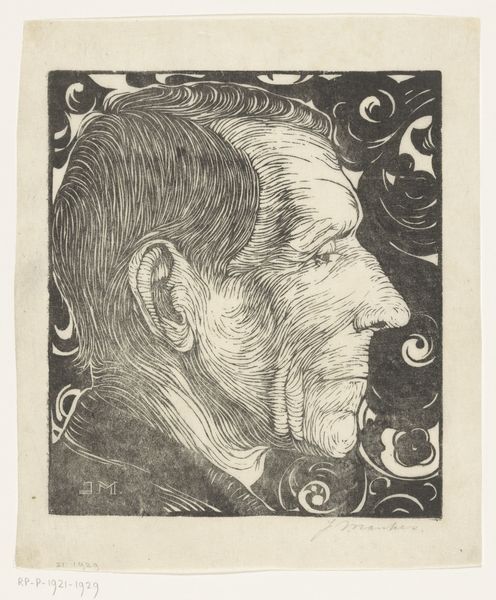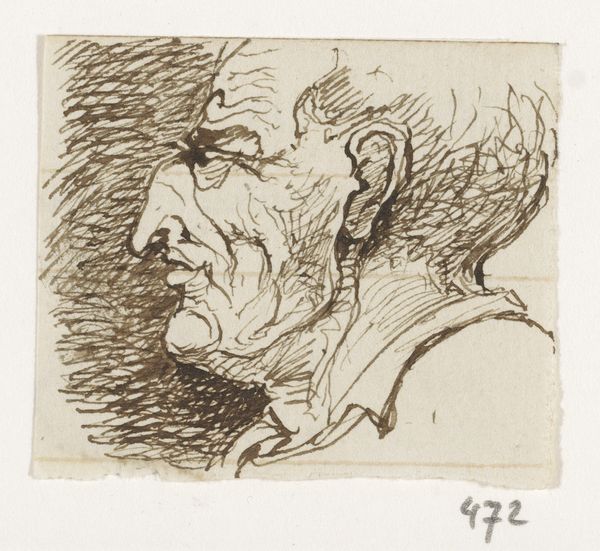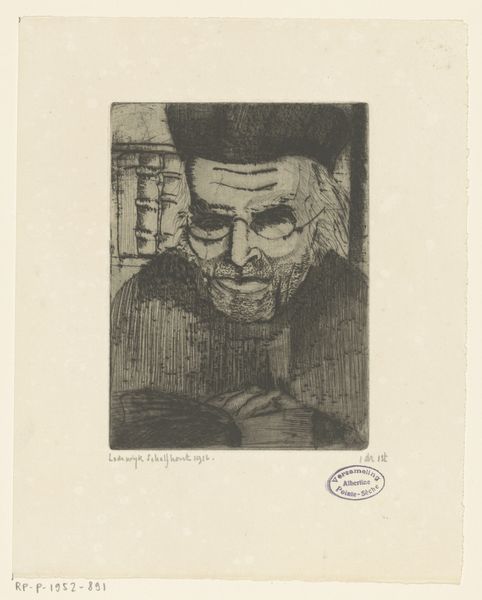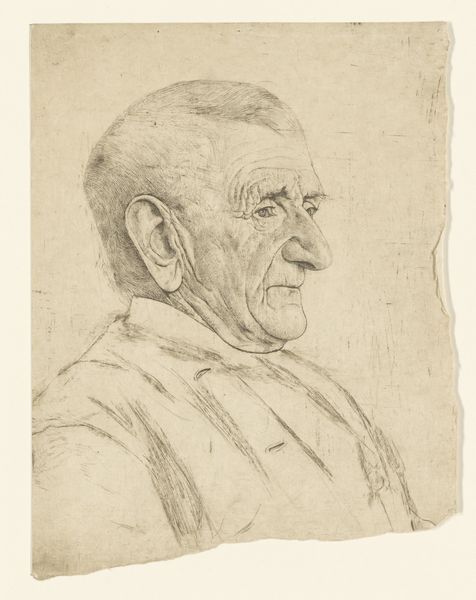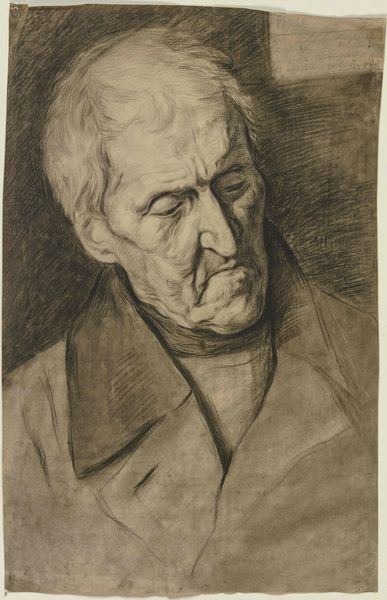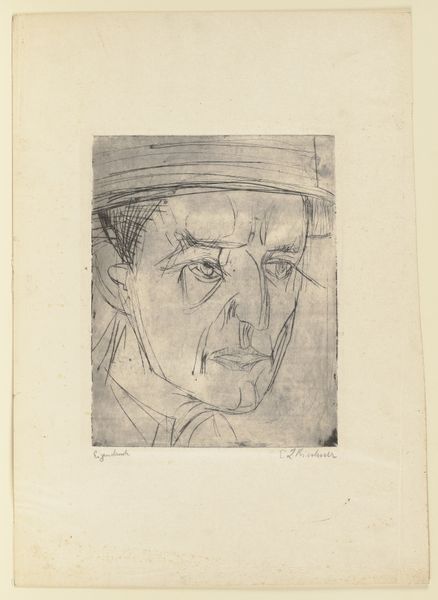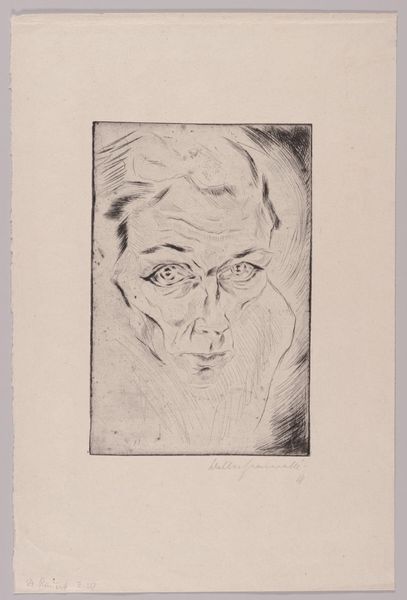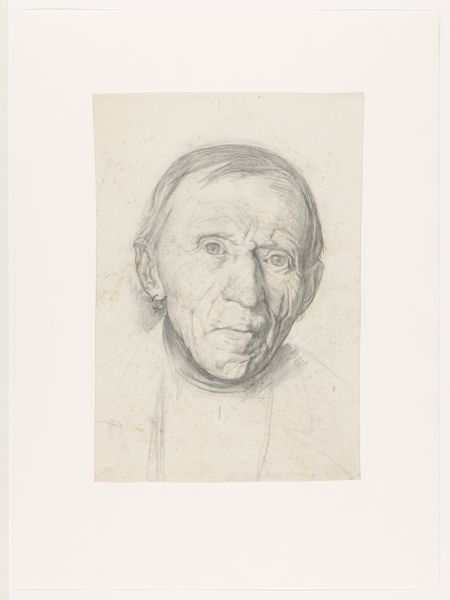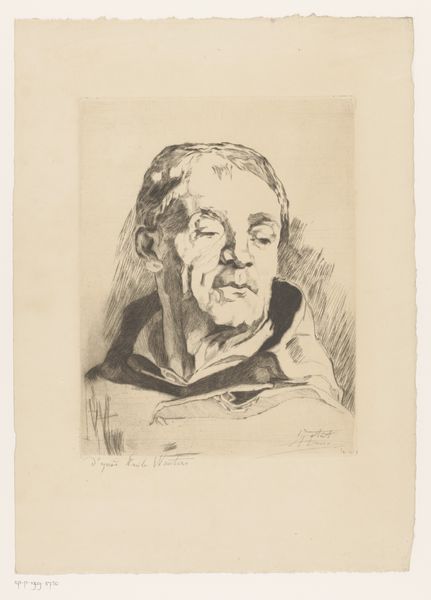
print, etching
#
portrait
# print
#
etching
#
figuration
#
portrait art
#
realism
Dimensions: height 348 mm, width 260 mm
Copyright: Rijks Museum: Open Domain
Editor: Here we have Auguste Danse's 1892 etching, "Head of a Monk, From the Front," currently held at the Rijksmuseum. I'm really struck by the almost tactile quality of the lines, you can practically feel the age in those etched wrinkles. What stands out to you? Curator: I see a concentrated focus on the manual labor inherent in etching. Note the dense network of lines. Danse isn’t just representing a monk; he's showcasing the laborious, almost meditative, process of printmaking. Editor: So you're saying the subject matter is less important than the *how* it was made? Curator: Precisely. Consider the accessibility of printmaking versus, say, painting in the late 19th century. Prints allowed for wider distribution and consumption of imagery. The labor involved—the meticulous scratching into the plate—made art available beyond elite circles. Look closely at the varying depths and directions of the lines, telling you something of Danse’s labor, his engagement. Do you agree? Editor: I hadn't thought about it that way, but now I see it. It’s a reproduction, accessible, democratic... The craft is the message, almost. Curator: Exactly. Think about the consumption of religious imagery during this period too. By focusing on the *material* production of this image, Danse invites us to consider the broader social and economic forces at play. Editor: This makes me appreciate how Danse calls attention to both art-making processes and accessibility. It is not only about monastic imagery but about who has access to these images through the very material and labor invested in the etching. Thanks, I would not have seen all that at first.
Comments
No comments
Be the first to comment and join the conversation on the ultimate creative platform.
